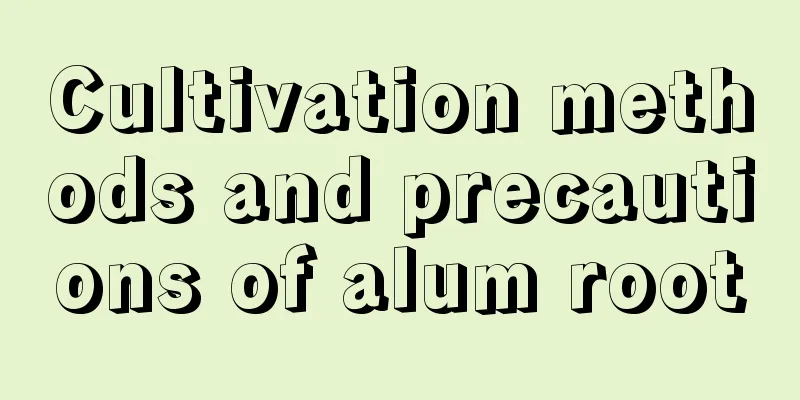Cultivation methods and precautions of alum root

Farming methodsLight and temperatureAlum is relatively cold-resistant, likes sunlight and tolerates shade, and is very suitable for maintenance in a cool and semi-shaded place. In summer, avoid direct sunlight, provide adequate shade, and remember to keep ventilation. In winter, the alum root can be placed in a sunny place for maintenance. The alum root is cold-resistant and can grow at temperatures above -15℃. Water and fertilizer managementWhen growing alum root, watering should be moderate. It does not like a too humid growing environment, so water it when the soil is dry and then water it after the surface of the soil is dry. In summer, you must control watering and make sure to water it thoroughly, which can promote the normal growth of the alum root. When cultivating alum roots, you should also pay attention to proper fertilization. In fact, alum roots will grow better in soil with less fertilizer, but they can also tolerate soil with higher fertilizer content. You can add more nitrogen fertilizer. Reproduction methodThe main methods of propagation of alum root are seed propagation and division propagation, and cutting propagation can also be used. PrecautionsPest and disease controlAlumroot is a colorful leaf variety newly introduced in recent years. It is rarely found to have diseases and pests. However, during the maintenance process, you still need to pay attention to the health of the plant. You can spray some insecticides or carbendazim for sterilization and disinfection. Watering precautionsAlum roots can be watered twice a week in summer, once a week in spring and autumn, and once every half a month in winter, or even not at all. Watering should be determined according to the needs of the plant. In addition, you can water in the afternoon in summer, and when the weather is cold in winter, you can water less in the morning on sunny days, but do not spray water on the core. DistributionAlumroot is native to the central region of America and is mainly cultivated in the northern region of my country. |
<<: Cultivation methods and precautions of tennis flower
>>: Cultivation methods and precautions of moth and butterfly flower
Recommend
What should I do if I water the arrowroot too much?
How to deal with excessive watering of the feathe...
How to grow lucky clover
1. Soil The growth of lucky clover requires ferti...
Black wolfberry planting conditions, growth environment and temperature requirements
Introduction to Black Wolfberry Black wolfberry i...
When is the best time to sow colorful bell peppers?
Colorful bell pepper planting time The colorful b...
How to fertilize ivy? This is the best way to get great results!
Fertilization method For ivy, choose a potting so...
What fertilizer is good for peony flowers?
Overview of Peony Fertilization Peony is a perenn...
What to do if the roots of Huayuejin rot
Causes of root rot in Huayuejin The soil in the p...
Cultivation methods and precautions of Cineraria
1. Breeding methods 1. Soil: The plant prefers so...
Propagation of Moon Rabbit Ears by Cutting and Cutting
Moon rabbit ears beheaded before cutting When a p...
If you want to grow flowers at home, choose these "3 types" and they will bloom for up to 100 days!
1. Kalanchoe Speaking of flowers that can stay in...
What to do if the kumquat tree loses leaves
1. Insufficient nutrients If it is often in a nit...
Does Kumquat prefer shade or sun?
Does Kumquat prefer shade or sun? Kumquat is not ...
How to repot dianthus
1. How to replace the new basin 1. First, use a s...
How to grow Brazilian iris on the balcony and what to pay attention to
1. Lighting The leaves of the Brazilian iris are ...
Can daisies be planted in the yard?
Can I grow daisies in my yard? Daisies can be pla...









